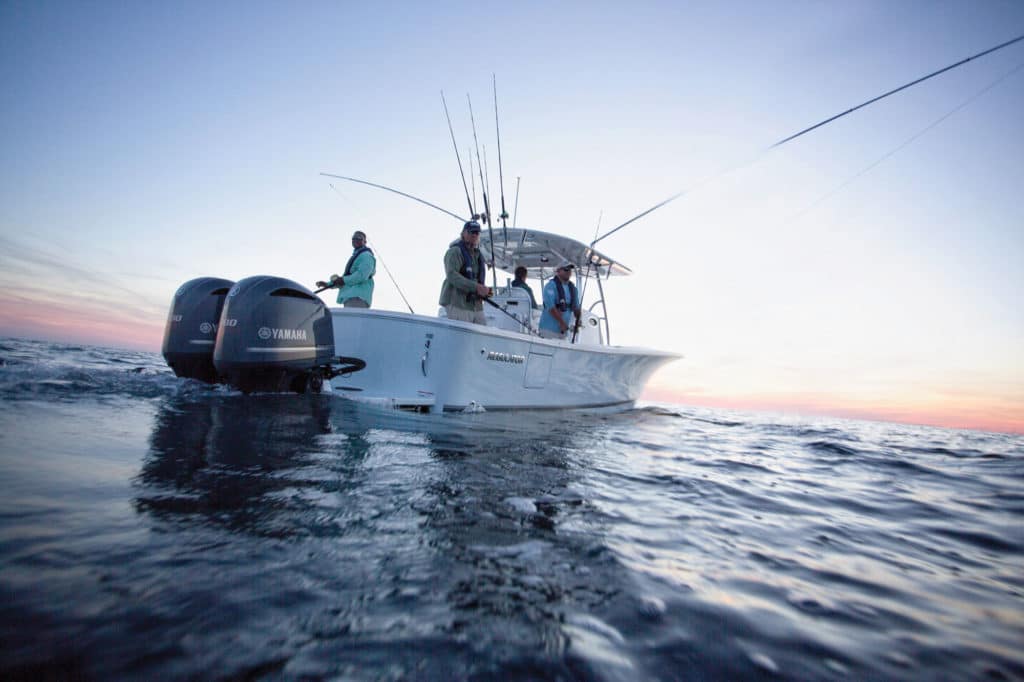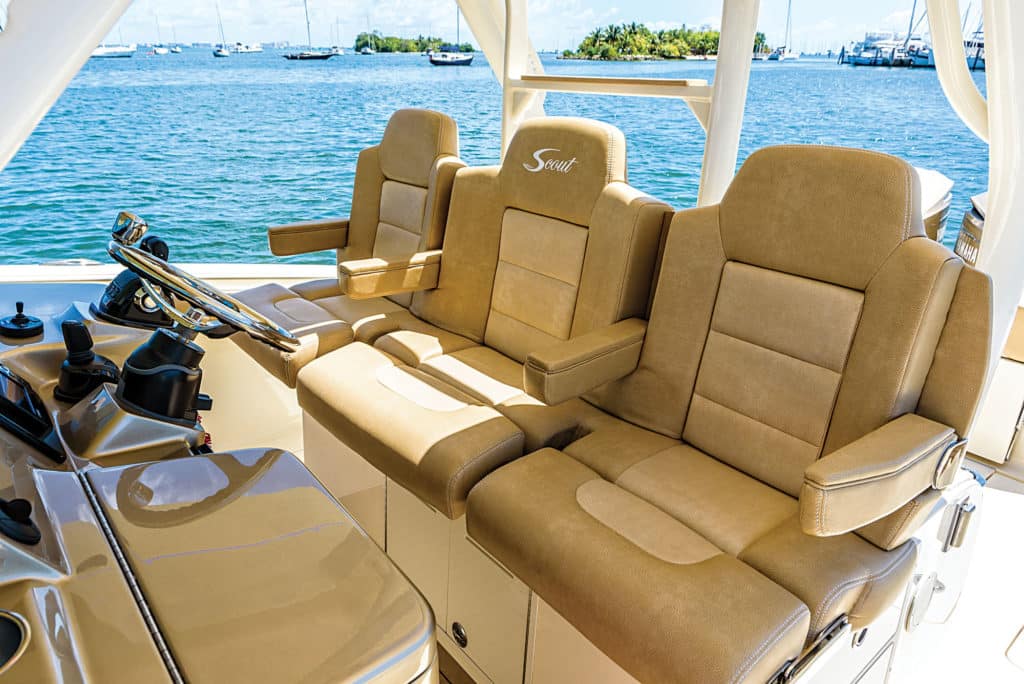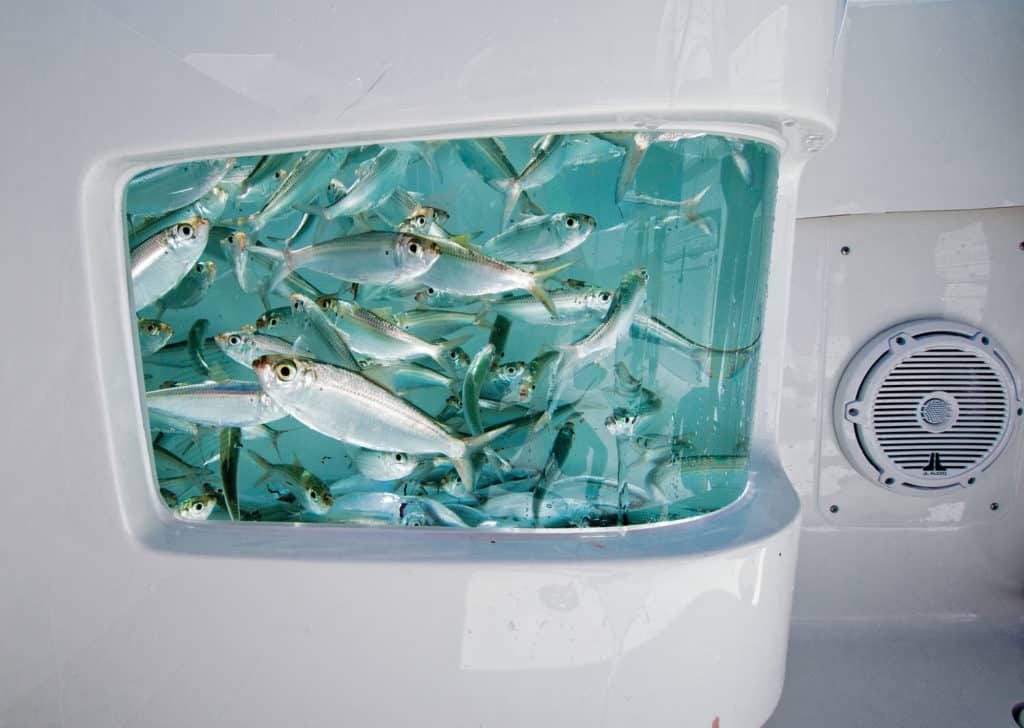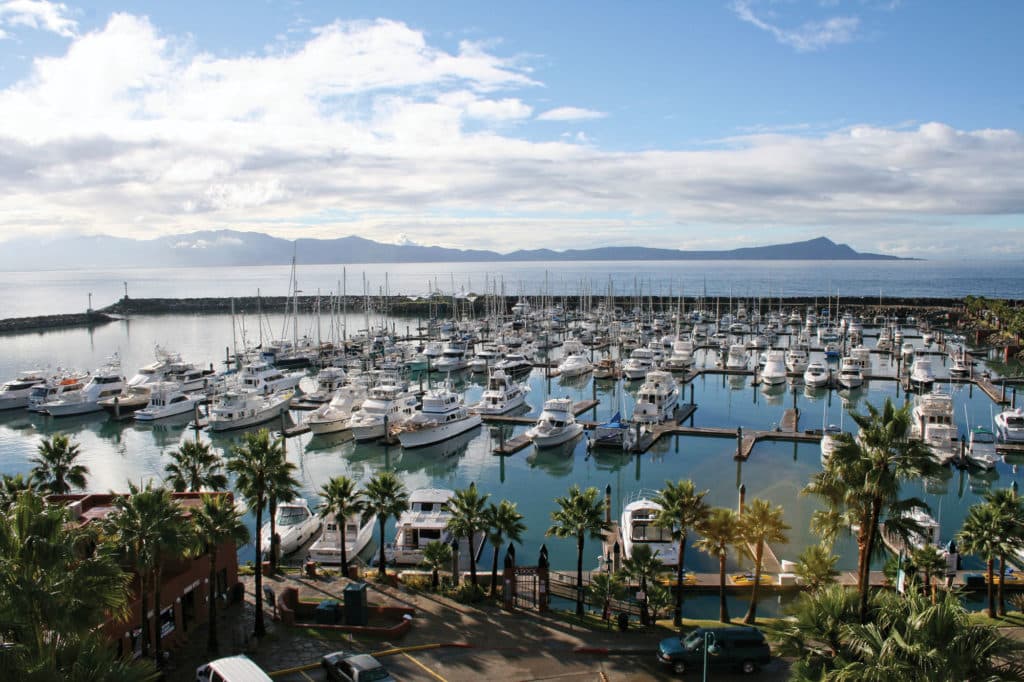
When it comes to shopping for an offshore center-console boat, you can look at brochures, watch videos and visit dealerships. In the absence of winter and spring boat shows, expect dealer workshops to pop up, hopefully with some on the water so you can climb aboard one. Until you get it out on the water, you don’t know what you’re getting. A sea trial lets you gauge how well an offshore center-console runs and handles big waters. Most dealers or factory reps are happy to host a sea trial for a serious buyer. A great experience should be key to the sale.
Visibility
Make sure you can see beyond the wheel. A boat that rides bow-high or has a dash that obscures your vision creates a safety issue. You should also feel comfortable at the helm, whether standing or seated.
Acceleration
The boat should climb onto plane without struggling, and without trim tabs, when you punch the throttle. If not, it might be a sign of insufficient power or incorrect props. Reschedule a new trial.
Planing Speed
The boat should plane at around 15 to 18 mph. An underpowered boat will not.
Low planing speeds are essential to comfort and efficiency in rough water.
Fuel Efficiency
Run the center-console at various rpm to determine the best fuel efficiency, using the digital guides to read mpg. This will give you an idea of the most efficient cruising speed, as well as fuel costs and fishing range going forward.

Smooth Ride
Aim for some rough water, and if the boat pounds, adjust outboard trim and tabs. If nothing improves, look at other boats.
Stability
Put the boat in a beam sea, and pull back to idle speed. You’ll experience some roll, but it should not be excessive or violent. If the roll feels comfortable and natural in a beam sea, the platform is stable.
Handling
Execute some hard turns. Bad signs include excessive sliding or tripping (catching the edge of chine). As you push through rollers, make sure the bow does not stuff into the waves. Check low-speed handing to ensure the boat docks with ease and offers strong response in reverse.
Staying Dry
Most boats will take spray on the windward beam in gusty conditions, but if it takes a lot of spray while running with or against the wind, that might be an issue; you might want to continue your search.
Speed
Few boaters consistently run at wide-open throttle while offshore, yet knowing the top speed is helpful in case, for example, you need to outrun an approaching squall. Also check rpm at WOT, and compare that to the engine-maker’s max rpm rating. This will tell you if the propeller selection is correct. Underrevving indicates the need for less prop pitch; overrevving means it needs more pitch.
Power Prognosis
Today, center-console boats dominate the offshore-fishing scene, and 99 percent of these boats are powered by outboard engines, according to our survey. Ever-more-powerful motors from brands such as Mercury, Suzuki and Yamaha have spurred the growing size of center-console boats, which now extend to 65 feet in length and sport as many as five big outboards. The motors themselves range upwards of 450 hp.
So how do you decide on the outboard-power configuration for your new boat? It is best to spec out the boat with the maximum-rated horsepower, says Ry Laundry, product manager for Yamaha Outboards, which offers outboards up to 425 hp. “You might not always use all of that power,” Landry explains, “but it is good to have that extra power available when you need it.”
In addition, fuel efficiency is often better when running a more powerful motor at a midrange throttle setting than running a smaller motor at higher rpm. This also helps ensure that you have reserve power available to accelerate out of danger. This can be critical, for example, if a large, menacing wave threatens from astern. With extra power, you can escape trouble quickly.
Forty-five percent of today’s offshore center-console fishing boats feature multiple outboards; our survey indicates twin and triples are most common, providing assurance of having power to return to port from far offshore should one of the engines experience a failure. Multiple outboards also enable greater maneuverability when docking in tight quarters.
Outfitting
Once you have decided on the boat model and propulsion configuration you want, it’s time to place your order. In today’s offshore-boat market, there are few boats standing by in inventory at manufacturers or dealerships. Most offshore-fishing boats are built only after the customer places an order. While this takes longer to deliver your boat than buying it off a showroom floor or dealer lot, it gives you the opportunity to order the boat with the accessories that match your wishes and style of fishing. You get it custom-built the way you want it.
Optional Choices
It is important to carefully consider how you want your offshore-fishing boat equipped. Don’t rush your decision on these items. There is a wide range of accessories that can make your offshore boat a more comfortable and effective fishing machine. The vast array of items you might consider: marine electronics, transducers, hull and interior colors, additional livewells, a permanent marine head, anchor windlass, outriggers, trim tabs or interceptors, battery charger, shorepower system, air-conditioning systems, enclosures, canvas work, a marine generator, a gyrostabilizer, additional rod holders and more.

In addition, there might be optional upgrades such as a larger fuel tank that replaces the standard tank, or a deluxe seating package that replaces the standard seating arrangement and upholstery on your boat model.
Production Boats
Your new boat’s equipment will vary greatly from a model sold through a dealer or one that is sold factory-direct.
Boats sold through dealers such as Boston Whaler, Crevalle, EdgeWater, Grady-White and Pursuit are often called “production” boats, even though many are custom-ordered for each customer. With such brands, some of the accessories that you desire might be standard or available as optional factory equipment. The dealer can outline and explain what items are standard, and work with you to ensure that the options you want are included when the boat is ordered and under construction. If one or more of the items that you want are not available as standard or optional equipment from the manufacturer, you can ask the dealer to work with you in adding these to the boat once it arrives at the store.
Factory-Direct
Offshore-fishing boats sold directly and exclusively from the boatbuilder (versus through a dealer) are almost entirely custom-built to your wishes. Customized elements of these factory-direct boats can include a choice of deck plans, specially built helms, expanded fuel capacity, custom helm seating, upholstery upgrades and special paint jobs. Almost all builders commonly offer options such as rod holders and outriggers.
With some factory-direct boatbuilders such as Freeman, HCB, Invincible, SeaVee and Yellowfin, there is a wider choice of outboard brands. Many production fishing boats are packaged with just one brand of outboard power.
Boats that are ordered and sold directly through the manufacturer also offer more latitude when it comes to the number of outboards versus power options for production boats. For example, with the 44ST from Contender, which sells factory-direct, you can order either triple or quadruple 425 XTO outboards.
Whether you decide on a production boat or a factory-direct model, spend the time necessary to make sure your new boat is outfitted exactly as you want it.

Storing Your New Boat
The manner in which your new boat will be stored between trips is an important decision, one that you should reach and arrange for well ahead of your boat’s arrival. There are five basic kinds of storage for offshore center-console fishing boats. These include in-water docking, a boat lift, a dry-storage facility, a mooring or a trailer. Your choice will hinge partially on the size of the boat, as well as where you reside and your personal preferences. Let’s look at each.
Docking
Docking (aka wet-slipping) your boat in the water at a marina, waterfront residence or elsewhere offers the convenience of having the boat afloat and ready to go fishing. It is one of the most popular methods for boats in excess of 35 to 40 feet in length. To control the growth of algae, slime, barnacles and worms below the waterline, the hull requires antifouling bottom paint (often applied annually) and periodic underwater scrubbings. Fortunately, the lower units of many outboards tilt clear of the water to prevent fouling of the drives and propellers. Marina dock fees vary with the size of the boat and regions. In waters prone to freezing, it’s often necessary to haul the boat and winterize it during the colder months of the year.
Boat Lifts
Boating anglers fortunate enough to have access to property on a navigable waterway can install a lift to hoist the boat clear of the water between trips using electrical and/or hydraulic power. This eliminates the potential for hull fouling and the need for bottom paint. There is a wide range of hoists available from brands such as Golden, HydroHoist, IMM, Shoremaster, Sunstream, Titan. The purchase price and installation costs can be substantial and vary with brand and weight requirements. There are usually local permits required, particularly if driving pilings is part of the installation.
Dry Storage
Many marinas offer dry storage for boats, some taking the form of dry-stack facilities, with boats stored three or four high, often in covered buildings. Large forklifts and skilled operators launch and retrieve boats upon request. Facilities can handle boats up to 35 or 40 feet in length, with some newer operators able to accommodate even larger boats. Most will launch your boat the day prior so it’s ready to go fishing the next morning. While dry storage eliminates fouling, some dry stacks cannot accommodate fishing boats with towers. Dry-storage fees vary with the size of the boat and coastal regions.
Moorings
Keeping your boat on a mooring buoy is the least-convenient and -desirable of all storage choices. Mooring requires a second boat such as an inflatable dinghy to access your boat for any reason, necessitates antifouling paint on the hull, exposes the boat to weather extremes, and leaves it more vulnerable to pilferage and outright theft than any other storage choice. Consequently, moorings have fallen from favor for today’s offshore-fishing boats.
Trailers
Trailers represent one of the most popular ways of storing offshore center-console fishing boats under 30 feet in length. Trailer storage eliminates hull fouling, protects your boat from weather extremes, and also enables greater mobility, allowing you to pick virtually any port of departure. Your boat dealer or factory rep can help you select the proper trailer for your new boat. In addition, make sure you have a vehicle with sufficient tow rating, power, and stability to pull, launch, and retrieve your new boat and trailer. Towing large boats might require special overwide permits. Trailering can also allow you to store your boat at your residence, so you can perform maintenance and other boat chores without leaving home.





